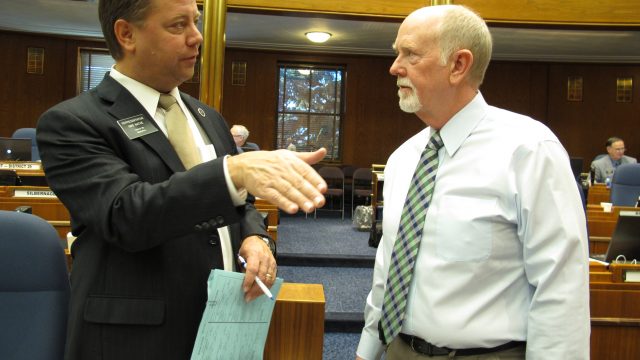North Dakota Education Spending Seems Completely Divorced From Need

In an article about funding priorities for education in the upcoming legislative session, Rep. Mike Nathe – a Bismarck Republican who also chairs the House Education Committee – predicted as many as 10,000 new students in the coming 2015-2017 biennium:
Nathe said it’s estimated that more than 10,000 new students are expected to enroll in K-12 across the state during the next biennium, resulting in a potential spending increase of approximately $300 million to meet the new needs.
“It’s going to be interesting to see how this session plays out and how it impacts Bismarck-Mandan,” said Nathe, adding that he’ll be meeting with local school officials later this month to learn more on their needs in advance of the session.
A lot of people might see that number and think it sounds reasonable. After all, North Dakota has seen rapid population growth in recent years, but it really doesn’t jibe with historical trends. This chart, created by Legislative Council, shows the trend in K-12 enrollment in North Dakota going back to to the 2004-2005 school year through the 2013-2014 school year (which is the last year for which numbers are available on the DPI website).
As you can see, it wasn’t until about 2009 that enrollment in the state stopped decreasing, and the largest enrollment growth the state has seen in the last two decades was between the 2011-2012 and 2012-2013 school years when it grew 3,414 students. Growth has actually slowed since then. From 2012-2013 to 2013-2014 the increase was 2,464 students. Which is still strong growth, don’t get me wrong, but given that the state seems to be reaching a plateau point when it comes to the oil boom (tax revenue growth is slowing, for instance) are we really expecting a level of growth in enrollment that’s multiples what we saw at the height of the oil boom era?
In no two years combined going back two decades, through the heights of the oil boom, has the state seen anything near what Nathe is projecting for enrollment growth in the coming biennium.
Color me skeptical.
Of course, actual needs don’t seem to matter much when it comes to K-12 spending, as history shows us. Here’s the trend in K-12 funding, where we’ve been averaging a 21.5 percent increase in funding since 2003 over average enrollment growth of just 0.28 percent (chart, again, via Legislative Council).
Enrollment declined from 2004 to 2009 by nearly 6 percent, or 5,267 students. Funding during that time, though, increased nearly 18 percent.
Since 2009 enrollment has increased roughly 8.5 percent while spending has increased a whopping 159 percent.
To be fair, some of that was the state buying down local property tax bills by taking over local school spending, but still. There’s something seriously amiss in these numbers.






